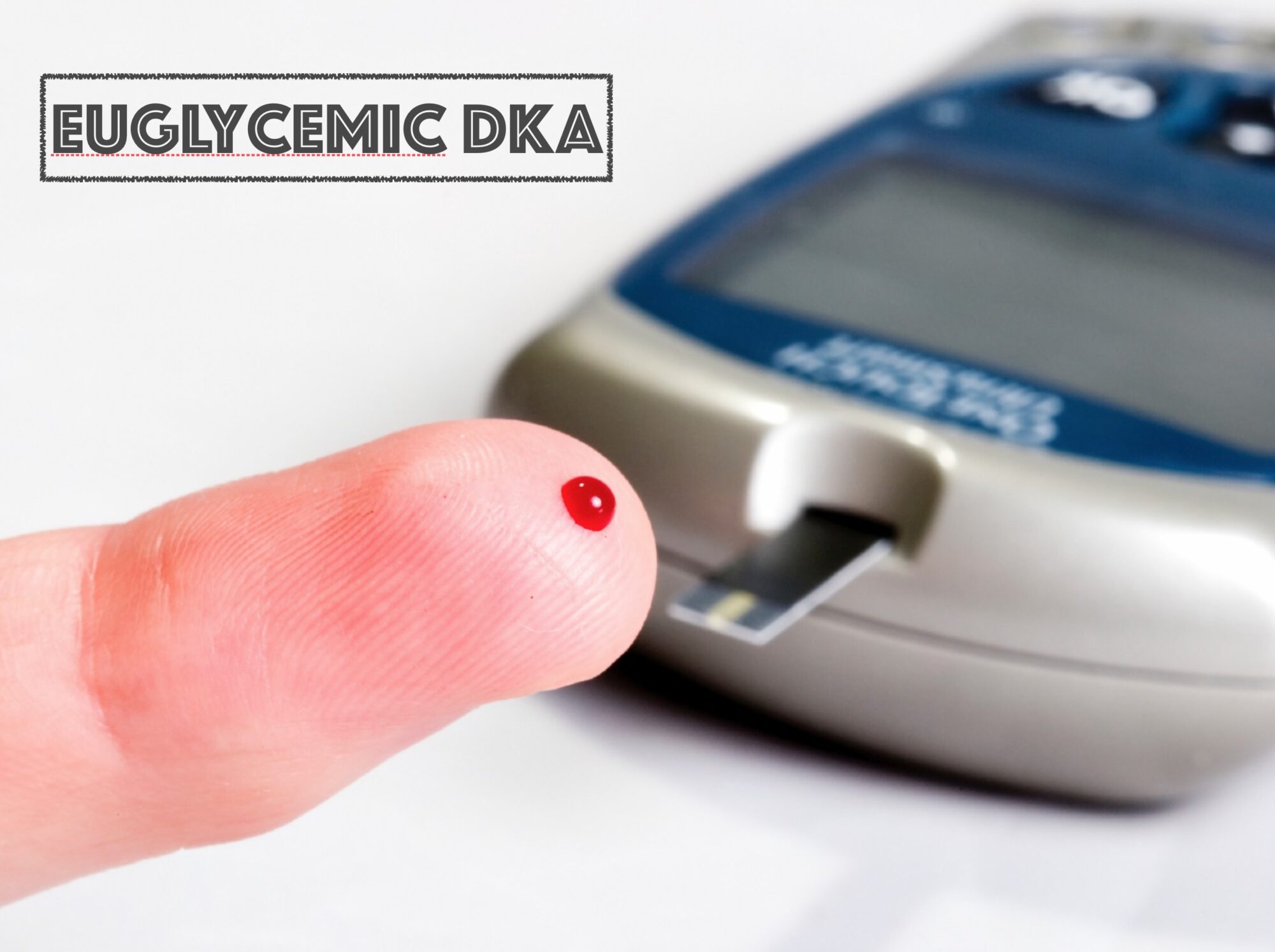Hi all. I wanted to bring to your attention a great case. The case was a young woman with relative euglycemic diabetic ketoacidosis. This diagnosis used to be quite rare and associated with pregnancy or very poor PO intake. However, with the use of SGLT2 inhibitors (which this young woman was taking) the incidence is increasing. The diagnosis highlights some very important factors about the treatment of DKA:
- Don’t just look at the blood sugar. Calculate your anion gap. Look at the bicarb. Calculate the strong ion difference. Check for ketones. A VBG is fine for a rough estimate of pH. If you really want to get fancy, an ABG will give you an accurate base deficit that can help you figure out (along with your lactic acid, strong ion gap, or delta-delta) exactly what else is going on with the patient in the setting of multiple competing metabolic processes. But that’s only if you want to get fancy. I think you can provide great initial resuscitation without it.
- Remember why we do what we do in DKA and all the complications you can get from treatment. The treatment is based on exactly the same principles that guide the treatment of “regular” DKA. However, they are not starting at the exact same metabolically disturbed place as most patients do. They can be just as sick, if not more, but the initial treatment has to take into consideration exactly where they are in their metabolic disarray. Things to think about as you are coming up with a treatment plan:
- These patients need fluid. Fluid will be your friend (more on that later)
- These patients need glucose. From the start. For a glucose less than 100-125, consider starting D10 instead of D5.
- They need glucose because they need insulin too. They still may have some relative insulin resistance so giving them glucose alone won’t help them if they cannot get the glucose into any cells. However, as you are already starting from a lower glucose, be very gentle. If you still bolus insulin in DKA (which I do- in selected cases- and would be glad to have conversation about whether we should or not at another time) do NOT bolus these patients. I don’t have great evidence as to where to start a drip so I pick a low number. Like 1 low. I can always move up. If anyone has a better scientific explanation on how to pick your infusion rate, I’d love to hear it.
- They need insulin so you better be sure you aren’t going to cause a malignant arrhythmia if you give it to them. Make sure your potassium isn’t going to plummet when you start insulin. Rough guideline is to make sure it is >3.3 . This is true for all DKA.
- They don’t have a sodium correction because the glucose is normal. If their sodium is already on the higher side (around >140), think of starting with ½ NS as your base.
The attending on the case did an excellent job with this patient. He focused on fluid and recognized her severe metabolic disturbance, despite the fact that her blood sugar was trying to hide it.
I’ve included two articles below. One is two case reports on euglycemic DKA and the other talks specifically about cases involving SGLT2 inhibitors. They aren’t the best articles I’ve ever read but they are more official than I am so felt I should include them. As a said, this is a relatively new class of medications and a relatively new phenomenon.
Euglycemic diabetic ketoacidosis: a diagnostic and therapeutic dilemma, EDM Case Reports, September 2017
Euglycemic Diabetic Ketoacidosis: A Potential Complication of Treatment With Sodium–Glucose Cotransporter 2 Inhibition, Diabetes Care, Volume 38, September 2015
Posted by:
Ruth Lamm, MD FACEP
Assistant Professor
Emergency Medicine
Critical Care Medicine
Saint Joseph’s Hospital Medical Center
lammr@sjhmc.org
